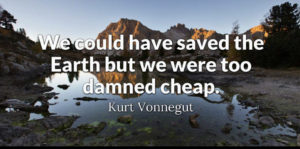The video embedded below, along with the draft script and supporting links, can be freely…
Open Letter to the World: Please Share Widely
Please join me in supporting the MEER:ReflEction framework. To do so is not to promote hope. Rather, it is to promote action, the opposite of hope.
Failure to implement this framework as quickly as possible will lead to loss of habitat for all life on Earth, including human life. This conclusion is firmly rooted in evidence published in the conservative peer-reviewed literature, as briefly discussed below.
The most important, brief overview regarding human extinction by 2026 involves the loss of Arctic sea ice in 2021, or perhaps as late as 2022 or 2023. The very rapid rate of climate change in the wake of an ice-free Arctic Ocean, and therefore the very rapid rate of environmental change, ensures little if any life on Earth will persist.
The ongoing Mass Extinction Event has been under way for more than 10 years: The United Nations Environment Programme reported in August of 2010 that we were driving an estimated 150-200 species to extinction every day. This is at least the eighth Mass Extinction Event during the last two billion years on Earth.
The projected rate of environmental change between now and 2100 is 10,000 times faster than vertebrates can adapt, according to a paper by Quintero and Wiens published in Ecology Letters on 26 June 2013.
Mammals cannot keep up, either, as reported in a paper by Davis and colleagues published in the Proceedings of the National Academy of Sciences on 30 October 2018.
Burke and colleagues reported in the Proceedings of the National Academy of Sciences on 26 December 2018 that the best analog for the future is the Pliocene. This paper uses the IPCC’s Representative Concentration Pathways in concluding that we are headed for the Pliocene as early as 2030. The Representative Concentration Pathways ignore dozens of self-reinforcing feedback loops and the aerosol masking effect. The mid-Pliocene was at least 1.8 C warmer than today. This stunningly rapid rate of environmental change indicates vertebrate mammals will not survive.
A paper in the 8 April 2020 issue of Nature projects that the collapse of ocean ecosystems will begin during the decade of the 2020s. The paper uses the IPCC’s conservative Representative Concentration Pathways.
The ongoing rate of environmental change is proving too rapid for vertebrates and mammals to adapt, and it is underlain by a high level of industrial activity. Yet a reduction in industrial activity also drives up the global-average temperature as a result of loss of aerosol masking. This conundrum presents us with the paradox described briefly here. Note that a 15 June 2021 paper in the peer-reviewed journal Nature Communications indicates previous research, including that conducted by Levy et al. (2013) and Rosenfeld et al. (2019), has underestimated the aerosol masking effect.
Earth is already losing habitat for human animals around the planet. A paper by Colin Raymond and colleagues published in Science Advances on 8 May 2020 concludes Earth has surpassed lethal wet-bulb temperatures in tropical and subtropical areas around the globe. The paper is titled, “The emergence of heat and humidity too severe for human tolerance.”
Self-sustained thawing of permafrost will occur even if all anthropogenic greenhouse gas emissions cease in 2020, according to a paper in the 12 November 2020 issue of Scientific Reports. Anthropogenic greenhouse gas emissions did not cease in 2020.
Biologists Strona and Bradshaw found that a 5 to 6 C global-average rise in temperature would cause the extinction of all life on Earth. Their paper was published 13 November 2018 in Scientific Reports and was titled, “Co-extinctions annihilate planetary life during extreme environmental change.” The paper includes the following information: “In a simplified view, the idea of co-extinction reduces to the obvious conclusion that a consumer cannot survive without its resources. … the removal of resources could result in the cascading (bottom-up) extinction of several higher-level consumers.”
There are additional means by which we could lose all life on Earth, as I have described at the Nature Bats Last blog. I have also described these means of extinction with a series of videos on YouTube.
In short, I know one means by which we might preserve life on Earth. I would rather support this strategy than turn Earth into a lifeless rock. Will you please join me?

